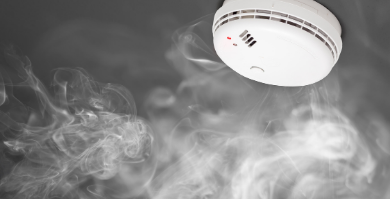Basement Flooding and Your Property: A Primer
Basement Flooding Basics: Start With Prevention
Basement flooding can present water damage cleanup challenges ranging from inconvenience to major disruptions and even serious safety hazards. Water damage of any kind is among the most costly types of property damage to repair. Considering the potential for disrupting your family’s lives or your business, creating serious safety risks and costing big bucks to repair, reasonable precautions to prevent basement flooding are a good investment.
As you evaluate your property for basement flooding risks, consider these reminders:
- Start with the exterior. Are gutters, downspouts and other features designed to collect and channel water away from the foundation (and basement) in clear and in good repair? Try to “think like water,” looking for low areas adjacent to your home or business foundation where rain can collect and seep into your basement.
- Next, inspect the structure and substructure. Are crawl spaces in good repair? Is visible plumbing in good shape? Clothes and dish washing machine connections dry? What about insulation to protect exposed water pipes in unheated crawl spaces from freezing and rupturing?
- The last defense: your sump pump. Routinely test your sump pump for proper, automatic operation. If it has been in service for more than 10 years, consider replacing it.
Basement Flooding Cleanup: Safety First
Water is determined, so your best precautions can unfortunately fail to prevent your basement from flooding at some point. If you do find yourself with basement flooding, don’t dive in right away and start feverishly bailing and cleaning. Take time to assess the situation for some potentially serious safety hazards.
Remember:
- Standing water is always a potential electrocution hazard. De-energize structures with standing water and be mindful of electrical appliance shock hazards when even modest moisture is present.
- Standing water likely contains hazardous biological and chemical contaminants. Pet and pest waste, pesticides and cleaning chemicals all can be present in any standing water. Practice rigid hygiene and thoroughly decontaminate tools and equipment used to extract and clean up any kind of flooding.
- Standing water can weaken structures. In science, water is sometimes called the universal solvent, When it comes to your home or business, water can literally dissolve binders and materials that provide structural support and stability. If the water is high and stands for more than a day, be wary of stairs and other weight-bearing substructures until they’ve inspected for structural integrity.
Basement Flooding Recovery: Prevention, Again
As you enter the recovery stages after cleaning up basement flooding, seek to understand why your basement flooded in the first place and correct or mitigate the problem to avoid repeating the whole headache.
Remember, if you feel overwhelmed with any water damage cleanup or restoration problem, we’re here to help. Call Delta Disaster Services for Peace of Mind During Uncertain Times®.
Learn more:
Popular Mechanics: How to Fix a Flooded Basement
Basement Flooding Cleanup Hassles
Everything You Wanted to Know About Water Damage Restoration but Were Afraid to Ask
Mold Risks You Should Know (and Avoid)
Save On Water Damage Repair Costs With These Tips
3 Types of Flood Damage Cleanup Denver Faces in the Next Year
What Makes Denver Water Damage Different?
National Disaster Recovery Commercial Water Damage Prevention Checklist
U.S. Dept. of Labor Occupational Safety & Health Administration Flood Cleanup Guide
Institute of Inspection, Cleaning and Restoration Certification Water Damage Resources
GOT WATER DAMAGE? GET HELP NOW! CALL DELTA DISASTER SERVICES




